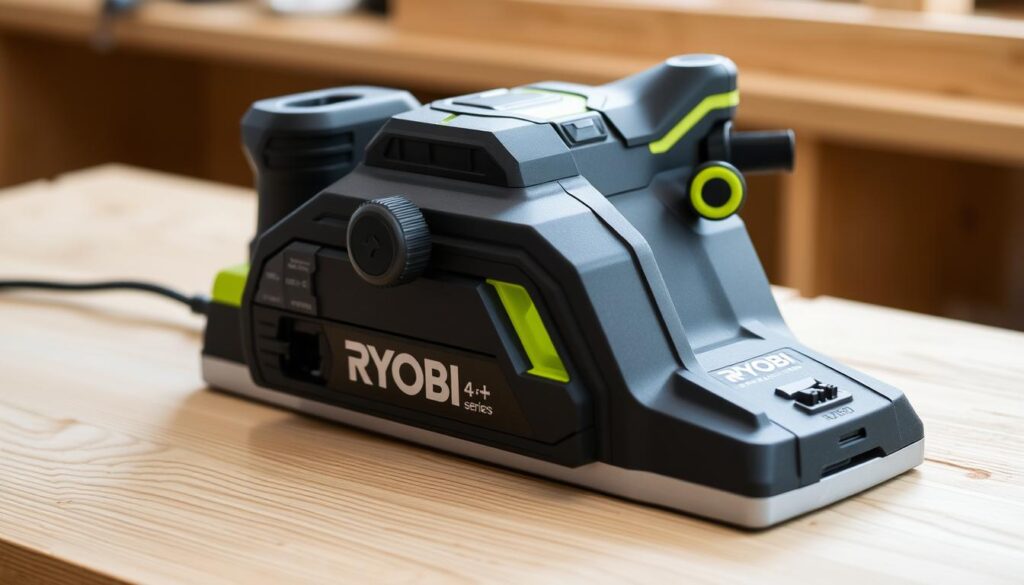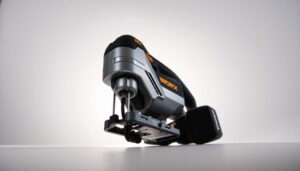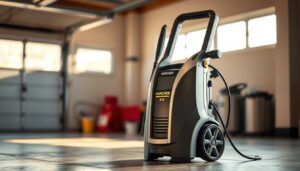Can a cordless planer truly deliver on its promises of convenience and portability for woodworking tasks? The Ryobi 18V cordless planer is a popular tool that promises to make planing doors and other materials easier without being tethered to a power source.
Users have varying experiences with this tool, with some finding it suitable for occasional use, while others question its effectiveness for heavy-duty applications. In this review, we’ll explore whether the 18V ONE+ cordless planer is a worthwhile investment for your woodworking needs.
The performance of this cordless planer is crucial in determining its value. We’ll examine its cutting ability, battery life, design features, and build quality to provide a comprehensive understanding of its capabilities.
Key Takeaways
- The Ryobi 18V cordless planer’s performance in various woodworking tasks.
- Comparison with corded alternatives in terms of value for money.
- Real-world applications where this tool excels or falls short.
- Design features and build quality of the cordless planer.
- Battery life and its impact on usability.
The Ryobi ONE+ Cordless Planer at a Glance
Ryobi’s ONE+ cordless planer offers a compelling blend of power and portability, making it an ideal choice for woodworkers who value flexibility and convenience.
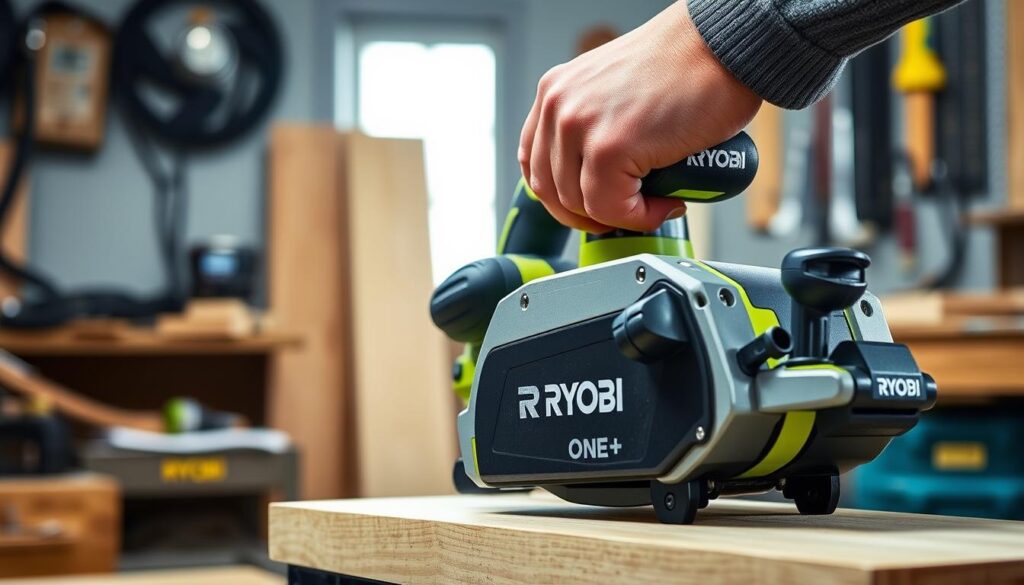
Key Specifications and Features
The Ryobi ONE+ cordless planer is part of the extensive 18V ONE+ range, allowing you to use the same lithium batteries across multiple tools in the kit. This cordless planer features adjustable depth settings, enabling precise control over your planing tasks. The planer also boasts a robust design, with a brushless motor that enhances performance and battery efficiency.
The specifications of the Ryobi ONE+ cordless planer include a cutting width and maximum depth capacity, making it suitable for various woodworking applications.
What’s in the Box
The package typically includes the planer unit, a dust extraction attachment, and potentially additional accessories depending on whether you purchase the bare tool or complete kit. The Ryobi ONE+ system is designed to be versatile, with over 175 tools in the range compatible with the same 18V batteries.
When purchasing the Ryobi ONE+ cordless planer, you can expect a comprehensive package that meets your planing needs, along with a dust bag for efficient cleanup.
Design and Build Quality Assessment
You should consider the build quality and design of the Ryobi ONE+ cordless planer for optimal use. The ergonomic design, construction quality, and safety features all contribute to the overall user experience.
Ergonomics and Handling
The ergonomic design of the Ryobi ONE+ cordless planer determines how comfortable it is to use for extended periods. The weight distribution of this 18v tool is crucial, as it affects your ability to maintain control at different angles. The grip and handle positioning are designed to reduce fatigue during longer planing sessions.
Construction and Durability
The construction quality of this 18v one tool impacts its durability and longevity. Users have reported continued functionality even after a year of heavy use, with some instances of hitting nails and screws. The robust build of the planer ensures that it can withstand the rigours of both DIY and professional use.
Safety Features
The Ryobi ONE+ cordless planer includes a safety switch start that prevents accidental activation. You must push and hold the switch down before pressing the trigger, ensuring a safe operation. This feature is particularly important when the tool is part of your kit.
| Feature | Description | Benefit |
|---|---|---|
| Ergonomic Design | Comfortable grip and handle positioning | Reduced fatigue during use |
| Robust Construction | Durable build quality | Withstands heavy use |
| Safety Switch | Prevents accidental start | Ensures safe operation |
Performance Review of the Ryobi ONE+ Cordless Planer
The performance of the Ryobi ONE+ cordless planer is a crucial factor in determining its value. As you consider this tool for your woodworking projects, understanding its capabilities and limitations is essential.
Cutting Power and Depth Control
The Ryobi ONE+ cordless planer boasts impressive cutting power, allowing you to make clean and consistent cuts with ease. The 18v lithium battery provides sufficient power to cut through various types of wood. The depth control mechanism is straightforward, enabling you to adjust the depth of cut with precision. You can achieve a maximum cut depth of up to 2mm with this planer, making it suitable for a range of woodworking tasks.
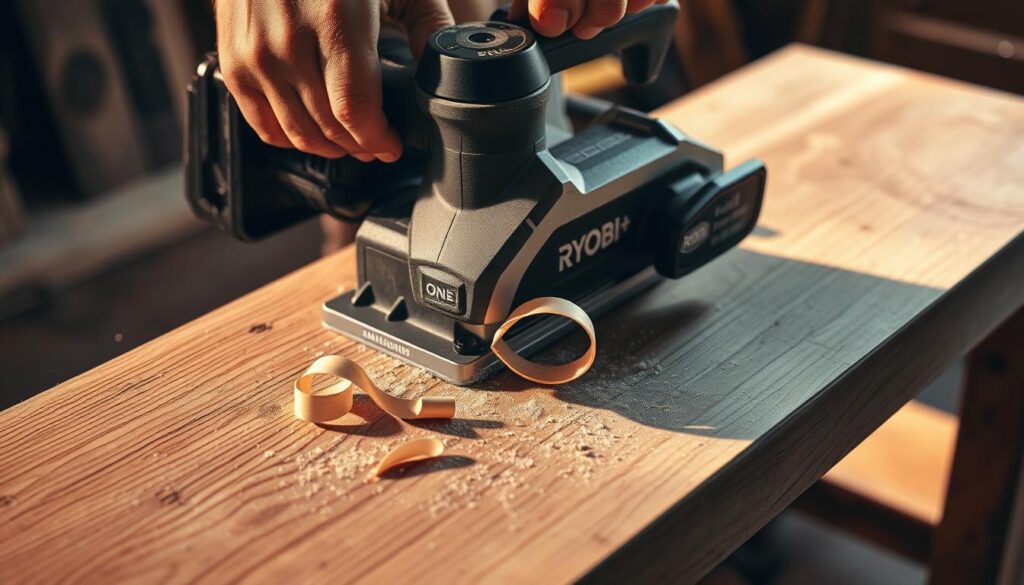
Battery Life and Runtime
Battery life is a significant consideration for any cordless tool. The Ryobi ONE+ 18v one cordless planer offers around 10 minutes of cutting time on a fully charged battery. However, battery performance may decrease as the charge depletes to about two bars, affecting the tool’s overall performance. To maximise your work time, it’s advisable to have spare lithium batteries on hand.
Dust Collection Efficiency
The dust collection system on the Ryobi ONE+ planer is generally effective, capturing a significant amount of dust generated during operation. However, some users have reported that the dust extractor may fall off at certain angles, which can be inconvenient. Ensuring the dust bag is securely attached will help maintain a clean workspace and improve visibility during use.
In conclusion, the Ryobi ONE+ cordless planer delivers satisfactory performance across various aspects, including cutting power, depth control, and battery life. While there are some limitations, the tool remains a valuable addition to any woodworking setup.
Practical Applications and Limitations
To get the most out of your Ryobi ONE+ cordless planer, you need to know its ideal use cases and potential drawbacks. This tool is particularly useful for tasks that require portability and flexibility, such as trimming doors and windows.
Ideal Use Cases
The Ryobi ONE+ 18v cordless planer excels in situations where a power outlet is not readily available. It’s ideal for occasional use, such as making quick adjustments to woodwork or smoothing out rough surfaces. You can use it to trim doors, windows, and other woodwork without the hassle of managing a power cord.
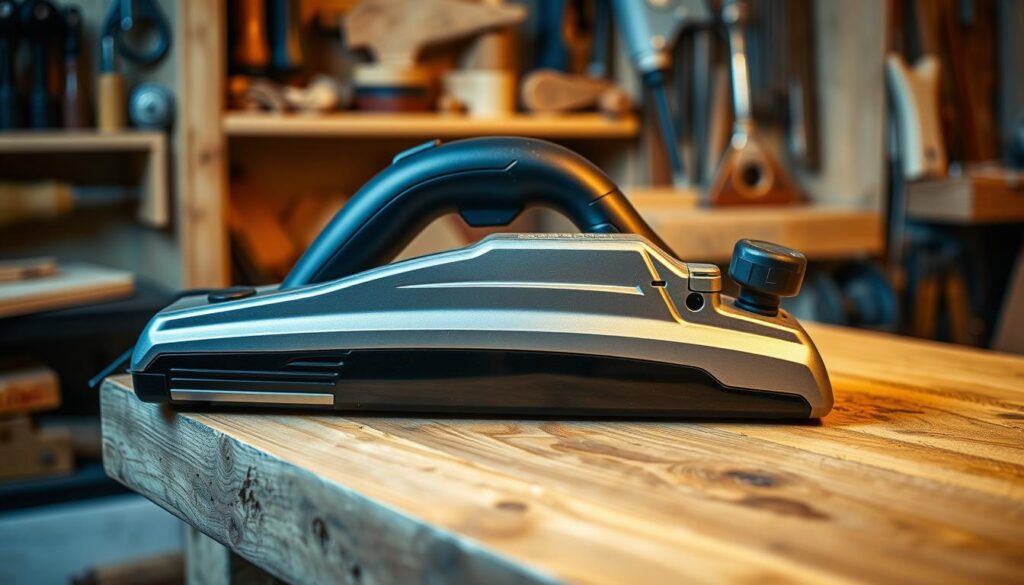
Limitations to Consider
While the Ryobi ONE+ cordless planer is convenient, it has its limitations. The battery life can be a constraint, especially for larger projects. As one user noted, “It’s ok for occasional use, but not much more than that.” This suggests that for frequent or heavy-duty use, a corded alternative might be more suitable.
Comparison with Corded Alternatives
When comparing the Ryobi ONE+ cordless planer to corded alternatives, the main difference lies in their power source and the impact on performance. Corded planers, like the Bosch planer, offer consistent power without the need for recharging. However, they are limited by the length of their cord. In contrast, the Ryobi ONE+ cordless planer offers portability and flexibility, making it perfect for jobs that require mobility. As noted by users, corded planers may be more suitable for longer jobs due to their lack of battery limitations.
Conclusion: Is the Ryobi ONE+ Cordless Planer Worth Your Money?
The decision to invest in the Ryobi ONE+ Cordless Planer depends on your specific needs and preferences. If you’re already invested in the Ryobi ecosystem, the compatibility with other 18v ONE+ tools adds significant value, as you can share batteries and chargers across your kit.
The Ryobi ONE+ Cordless Planer offers portability and ease of use, making it suitable for DIY enthusiasts and occasional professional use. However, its limitations, such as battery life constraints and reduced cutting power compared to corded alternatives, need to be considered.
When evaluating the long-term value proposition, factors such as durability, availability of replacement blades, and overall build quality are crucial. User reviews and experiences from various posts and videos indicate a mixed opinion about the tool’s value, with some finding it adequate for occasional use and others recommending corded models for more frequent applications.
Ultimately, the Ryobi ONE+ Cordless Planer is a potentially valuable addition to your toolkit if you prioritise convenience and are already using other Ryobi 18v tools. However, if you require professional-grade performance, you may need to consider alternative options or weigh the benefits against the limitations.
